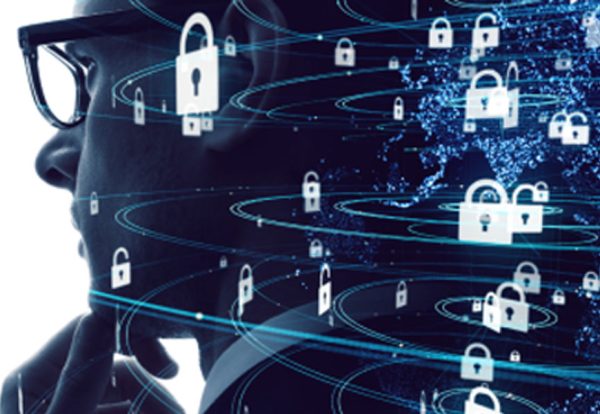Forecasting the Future of Phishing
Phishing attacks remain a pervasive danger to both individuals and organizations and their frequency has been rising in recent years. In 2022, the threat landscape evolved with several new phishing attack trends, underscoring the need for continuous vigilance and proactive measures to safeguard against these threats. It is critical to remain informed and up-to-date on the latest phishing attack techniques and best practices to prevent falling prey to these malicious schemes.
In 2022, there were notable instances of phishing attacks that caused significant impacts on various prominent organizations worldwide.
Examples of Noteworthy Phishing Attacks in 2023
SolarWinds Supply Chain Attack: One of the most significant and widespread phishing attacks in recent history was the SolarWinds Supply Chain Attack. This attack was discovered in December 2021, revealing that a sophisticated group of hackers used a phishing attack to compromise the software supply chain of SolarWinds, a major provider of IT management software. By implanting malware in SolarWinds’ software updates, which were distributed to thousands of organizations worldwide, the attackers were able to cause significant impacts on many organizations, including government agencies and critical infrastructure providers.
Capital One Data Breach: In July 2022, Capital One, one of the largest banks in the United States, made a shocking announcement that it had suffered a massive data breach affecting over 100 million customers. The cause of this breach was traced back to a successful phishing attack, which enabled the attacker to gain access to Capital One’s cloud infrastructure, where sensitive information, such as credit card numbers, Social Security numbers and bank account numbers, was stored. This incident serves as a stark reminder of the critical need for organizations to protect sensitive data by implementing robust security measures, including multi-factor authentication, to thwart phishing attacks.
Attack on Major US Healthcare Providers: A major US healthcare provider made an announcement in August 2022 that it had fallen victim to a phishing attack that resulted in the theft of sensitive patient information, including medical records and insurance details. The attackers used a phishing email that appeared to be from a trusted source to trick employees into downloading malware onto their systems. This incident underscores the critical need for organizations to prioritize employee education and security awareness training to prevent phishing attacks. Additionally, implementing robust security measures, such as email filtering, can further bolster an organization’s protection against such attacks.
Phishing Attack on Major US Retail Chain: In September 2022, a major US retail chain announced that it had suffered a phishing attack that resulted in the theft of sensitive customer information, including credit card numbers and billing addresses. The attack was launched through a phishing email that appeared to be from a trusted source, tricking employees into downloading malware onto their systems. This attack highlights the importance of implementing strong security measures, such as multi-factor authentication, to prevent phishing attacks and the need for organizations to be vigilant in detecting and responding to security threats.
The Importance of Proactive Security Measures in Preventing Phishing Attacks
The aforementioned incidents serve as striking illustrations of the substantial harm that phishing attacks can inflict on organizations. These occurrences also emphasize the critical significance of establishing robust security measures to prevent these attacks. To safeguard against these constantly evolving threats, organizations must take a proactive stance towards security, persistently monitoring their networks and systems and responding promptly & efficiently to these malicious attacks.
The Rise of Social Engineering in Phishing Attacks in 2022
An emerging trend in 2022 was the growing employment of social engineering tactics in phishing attacks. Social engineering involves using psychological manipulation to deceive individuals into divulging confidential information or executing actions that could jeopardize security. Perpetrators use social engineering approaches, like impersonating a trusted entity or inducing a sense of urgency, to dupe people into clicking on malicious links, downloading malware, or exposing sensitive information.
Cloud-based Infrastructure: A Growing Trend in Phishing Attacks
Another significant trend identified in 2022 is the utilization of cloud-based infrastructure in phishing attacks. Hackers are exploiting the convenience and scalability of cloud-based services to conduct phishing campaigns on a massive scale. For instance, perpetrators may utilize cloud-based storage services to host phishing pages or leverage cloud-based email services to disseminate phishing emails to a large number of people. This makes it simpler for attackers to conceal their activities and evade detection, increasing the importance of maintaining vigilance among organizations and individuals.
Mobile Devices and Applications Amplify Phishing Attacks in 2022
The proliferation of mobile devices and the growing popularity of mobile applications increased the rate of phishing attacks during 2022. Cybercriminals are exploiting these trends to target mobile users and steal their sensitive information, including login credentials and financial data. Tactics employed include creating fake mobile apps that mimic legitimate ones, the distribution of phishing SMS messages with malicious links, and the use of browser-based phishing attacks on mobile devices. As mobile technology continues to advance and become more integrated into our daily lives, it is crucial for individuals and organizations to stay vigilant to mitigate the risks of mobile phishing attacks.
The Emergence of AI and Machine Learning in Phishing Attacks in 2022
In 2022, a growing trend in phishing attacks was the use of artificial intelligence (AI) and machine learning (ML) by attackers. AI and ML create more sophisticated and personalized phishing campaigns that can bypass traditional security filters. For example, attackers may use AI and ML algorithms to generate convincing fake emails that appear to be from legitimate sources or to mimic the writing style of a trusted sender. This makes detecting and preventing phishing attacks even more challenging for individuals and organizations, highlighting the need for advanced security measures and employee education programs.
The Challenge of Spear-Phishing and Running a Security Operations Center (SOC)
The growing trend of spear-phishing attacks highlights the importance of training employees to identify and avoid such attacks. However, for organizations running a Security Operations Center (SOC), this can be challenging due to various factors. One of the main challenges is the shortage of skilled security personnel, making it difficult to monitor and respond to threats effectively. Additionally, managing multiple security technologies and tools can be complex and lead to operational inefficiencies, posing the risk of missing critical security events. SOC teams must also balance incident response with business operations, ensuring that security incidents do not disrupt critical business processes. Moreover, keeping up with evolving security threats and the latest security technologies and best practices requires continuous training and education for SOC personnel.
Best Practices for Preventing Phishing Attacks: Proactive and Continuous Security Measures for Organizations and Individuals
Protecting against phishing attacks requires proactive and continuous security measures from both organizations and individuals. Strong security measures such as multi-factor authentication and email filtering can reduce the risk of successful attacks. Moreover, security awareness training and employee education programs can assist individuals in identifying and avoiding phishing attacks. Regular security assessments and penetration testing can also help organizations identify and address potential vulnerabilities and weaknesses in their security posture.
To summarize, phishing attacks are expected to remain a significant and evolving threat in 2022. Attackers are using various tactics, such as social engineering, cloud-based infrastructure, and AI and machine learning to launch more sophisticated phishing campaigns. To mitigate these risks, organizations and individuals need to take proactive security measures, including implementing strong security controls and education programs to reduce the likelihood of successful attacks. Staying up-to-date with the latest trends and best practices for preventing phishing attacks can help organizations and individuals better safeguard against these threats.
Anzen’s monitoring, detection, and response services address all cyber threats, including phishing attacks, to help organizations stay secure. Our expertise in preventing phishing attacks enables us to implement best practices that can protect organizations against potential threats. We take a proactive approach to security, using effective measures to prevent phishing attacks and other threats from infiltrating an organization’s systems.
To help organizations prevent phishing attacks, Anzen offers a range of services and solutions, such as email filtering and spam detection software, multi-factor authentication for all accounts, and regular testing of security defenses through simulated phishing attacks.
Our goal is to help organizations to stay ahead of potential threats and keep their systems and data secure.





